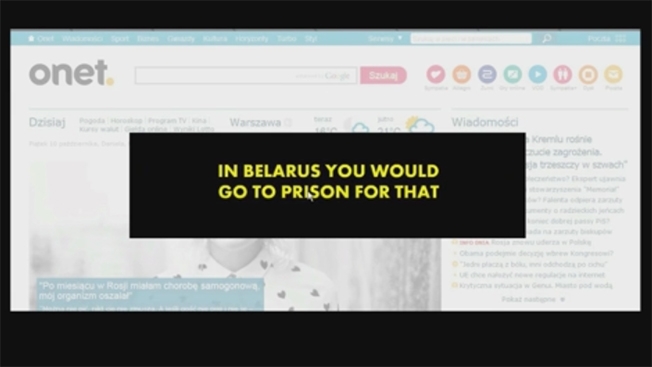The one thing we can’t seem to lose is our own sense of self
by
From Adbusters #121: Manifesto for World Revolution Pt. IV

The Mishka Edition Fisher Wallace Stimulator | Artwork by L’Amour Supreme
I keep looking for the edge of the earth but someone with a selfie-stick always gets there first.
From the top of Mt. Hallasan, in the absence of cloud cover, I should see the East China Sea. Instead I watch hikers mugging over the volcanic crater with slender robotic sticks, self-documenting Internet automata.
Traveling through Quadra Island along Canada’s West Coast, my heart falls because clear-cuts and mansions interrupt the forest. The remote bays clogged with in-land restaurants and anchored yachts.
By seeking the wild in the world I’m also seeking the wild in me – but it is getting harder.
Not only do smart phones route our every step, timestamping and broadcasting our movements, they ensure that our brains’ habitual wiring stays stuck in self-consciousness – pinging us and our online image, churning insight and wonder through instant gratification.
The one thing we can’t seem to lose is our own sense of self.
It’s doubtful you could disappear for half an hour – much less half a day – without an anxious urge to check in as digital detritus piles up.
Forays into the unknown are increasingly fleeting, desperate and dangerous. Bloody uprisings trade-in secular tyrants for religious oppressors. Communities of resistance splinter despite the hashtags.
Festivals accelerate the carnivalesque with hallucinatory techgnosis. We fly headlong from old ruts, tripping over fresh trenches in the terra-incognito of altered states amid drone vibrations.
In a virtual thrall, we don’t see the long spiral of a hawk riding the thermals, or note the migratory geometry of geese in flight. Deep-sea creatures die off without ceremony, their loss as unsounded as the depths of our unconscious. We follow millions of distractions like schools of flitting fish but our thoughts reach the surface of cognition belly up.
Hemmingway’s lost generation sat around bars and cafes in Paris. They drank to an absence of moral signposts. They learned to write in the spiritual shadow of the machine gun: the industrial age’s first great horror, with the power to level superstructures of meaning. These ex-pat artists toasted the still-smoking ruins of the first Great War and found a culture of artistic potency through hungry wanderings down the long avenues.
The present generation is similarly leveled by new technologies but too sated with information and image to germinate creative breakthroughs.
“Hunger is good discipline and you learn from it,’ Hemmingway writes in A Moveable Feast, “I’m so far ahead of them now that I can’t afford to eat regularly.’
Bookstores and blogs are clogged with authors selling the path to success. Look at me, their recursive logic goes, I became rich selling the fantasy of fulfillment — and so can you. The snake oil of self-improvement is sold in a plaza full of husks. Welcome to the supermarket of the sixth extinction.
In Peter Matthiessen’s zen classic The Snow Leopard, he never finds the elusive beast he seeks in the Himalayas. Instead he feels awe with the knowledge of the animal’s existence. He discovers solace in mountains dotted with prayer flags and temples. When he finds the leopard’s paw prints in the snow, they resonate like a koan about absence, nourishing the deep mind while the grasping brain starves.
David Foster Wallace likened individual consciousness to a map. The metaphor is apt, evoking our dense and connected neuropaths. It is also a post-modern symbol for the soul – being as a map and trailhead for where we go and what we think.
A generation raised by helicopter parents is ill equipped to master the algorithms that control daily life. Wallace warns against the desire to premeditate every experience in Infinite Jest:
“Almost nothing important that ever happens to you happens because you engineer it. Destiny has no beeper; destiny always leans trenchcoated out of an alley with some sort of ‘psst’ that you usually can’t even hear because you’re in such a rush to or from something important you’ve tried to engineer.’
Another master of leaving the map, novelist Haruki Murakami, writes about the necessity of going there in Kafka on the Shore. There are sights and sounds at the top of mountains and at the bottom of our minds, sights and sounds a camera-phone can’t record.
“Even if you go to the ends of the earth, you won’t be able to escape it. Still, you have to go there—to the edge of the world. There’s something you can’t do unless you get there… Beyond the edge of the world there’s a space where emptiness and substance neatly overlap, where past and future form a continuous, endless loop. And hovering about there are signs no one has ever read, chords no one has ever heard.’
— Andrew Mills is Adbusters Editor-at-Large, currently in South Korea.
Source

















